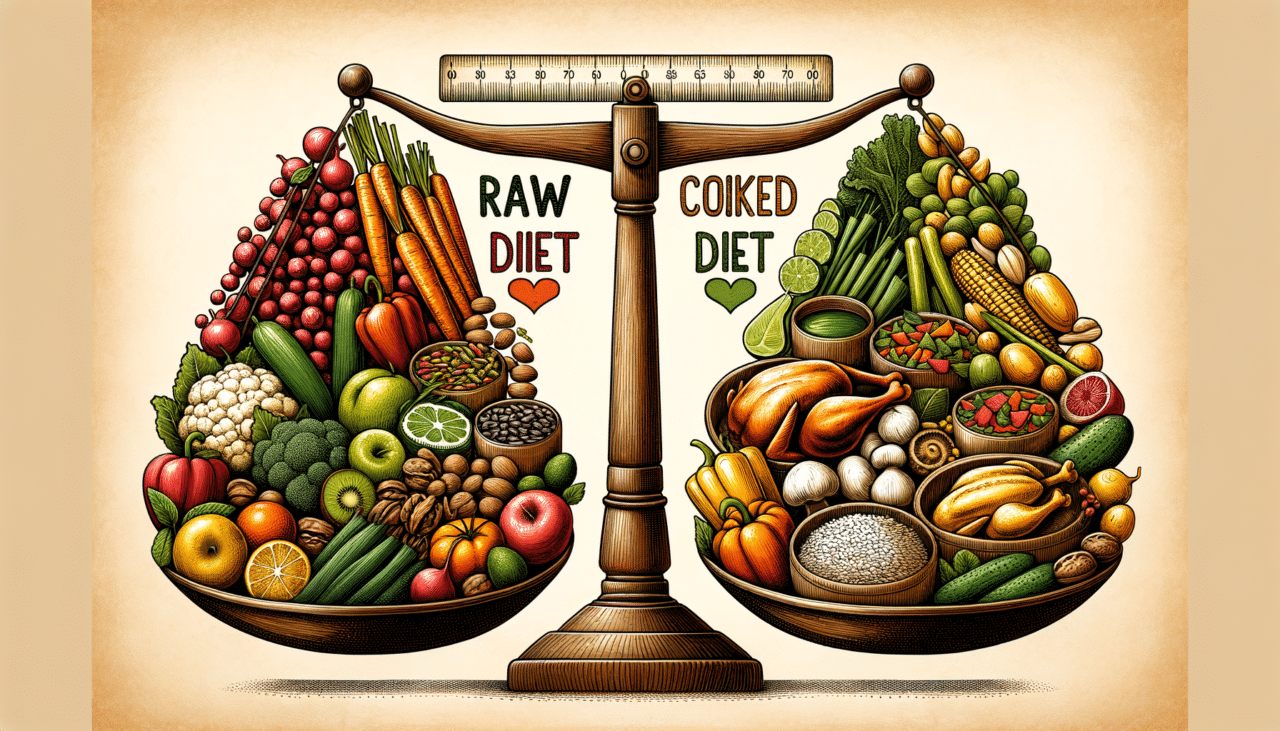In the world of nutrition, the debate between raw and cooked diets remains a hot topic. Both dietary approaches have their own set of followers and claims, each touting distinct health benefits. This article aims to provide a detailed comparison between the RAW Diet and the Cooked Diet, helping you make an informed choice. We will explore the key characteristics of each diet, highlight their benefits and drawbacks, and provide a comprehensive comparison table for easy reference.
What is a RAW Diet?
The RAW Diet, sometimes referred to as raw foodism, emphasizes the consumption of uncooked and unprocessed foods. Proponents of this diet believe that cooking food destroys essential nutrients and enzymes that are beneficial for digestion and overall health. The RAW Diet primarily includes fruits, vegetables, nuts, seeds, and sprouted grains. Some followers also consume raw meat, fish, and dairy, but these are less common.
Key Characteristics of a RAW Diet:
- Nutrient Retention: By avoiding cooking, the RAW Diet aims to preserve the natural vitamins, minerals, and enzymes present in foods.
- High in Fiber: The diet is rich in fruits and vegetables, contributing to high fiber intake, which is beneficial for digestive health.
- Low in Processed Foods: The focus is on whole, unprocessed foods, reducing the intake of additives and preservatives.
- Hydration: Raw foods often have a higher water content, aiding in hydration.
- Detoxification: Advocates claim that the diet helps the body detoxify naturally.
Potential Drawbacks:
- Nutritional Deficiencies: Certain nutrients like vitamin B12, iron, and omega-3 fatty acids may be lacking.
- Food Safety Concerns: Risk of foodborne illnesses due to the consumption of raw meat and dairy.
- Digestive Challenges: High fiber content may be difficult for some to digest.
What is a Cooked Diet?
A Cooked Diet involves the preparation of foods through methods such as boiling, steaming, grilling, or baking. Cooking can enhance flavors, improve texture, and increase the digestibility of certain foods. It is a more traditional approach to eating and is widely practiced globally.
Key Characteristics of a Cooked Diet:
- Enhanced Digestibility: Cooking helps break down fibers and proteins, making them easier to digest.
- Improved Taste and Texture: Cooking enhances flavors and makes food more palatable.
- Increased Absorption of Nutrients: Some nutrients, like lycopene in tomatoes, become more bioavailable when cooked.
- Food Safety: Cooking kills harmful bacteria and pathogens, reducing the risk of foodborne illnesses.
- Versatility in Meal Preparation: Provides a wide range of cooking methods, allowing for diverse meal options.
Potential Drawbacks:
- Nutrient Loss: Heat-sensitive nutrients such as vitamin C and some B vitamins can be lost during cooking.
- Use of Fats and Oils: Certain cooking methods may involve additional fats, leading to higher calorie intake.
- Processed Foods: Cooked diets may include processed foods high in sodium and unhealthy fats.
Comparative Table: RAW Diet vs. Cooked Diet
| Feature | RAW Diet | Cooked Diet |
|---|---|---|
| Nutrient Retention | Preserves heat-sensitive nutrients and enzymes | May lose some vitamins and minerals during cooking |
| Digestibility | High fiber, can be challenging for some | Cooking aids digestion by breaking down fibers and proteins |
| Food Safety | Risk of foodborne illnesses with raw meat/dairy | Cooking eliminates bacteria and pathogens |
| Taste and Texture | Natural flavors, crunchy textures | Enhanced flavors and varied textures through cooking |
| Nutritional Balance | Potential deficiencies in vitamin B12, iron, omega-3s | Typically more balanced if a variety of foods are cooked and consumed |
| Hydration | High water content helps with hydration | Varies depending on cooking method |
| Preparation Methods | Minimal preparation, no cooking required | Diverse cooking methods available (boiling, grilling, steaming, etc.) |
| Dietary Restrictions | Vegan-friendly with no animal products, unless raw meat/dairy are included | Can accommodate any dietary preference with appropriate cooking methods |
Conclusion
Choosing between a RAW Diet and a Cooked Diet depends on individual preferences, health goals, and lifestyle. While the RAW Diet offers the advantage of nutrient retention and detoxification, the Cooked Diet provides enhanced taste, digestibility, and food safety. It’s essential to consider the potential drawbacks of each diet and ensure a balanced nutritional intake. Consulting with a healthcare professional

Comments (0)
There are no comments here yet, you can be the first!